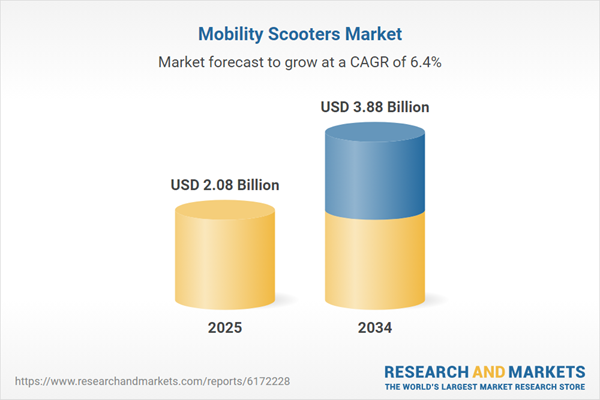Increasing Preference for Mobility Scooters over Traditional Wheelchairs to Boost the Market Growth of Mobility Scooters
The market for mobility scooters is being driven by the advancement of technology and the rising incorporation of automation in mobility vehicles. Owing to the increasing geriatric population, the prevalence of orthopaedic disorders, and the occurrence of accidents causing mobility disorders are the factors augmenting the growth of the market. Additionally, the increasing disposable incomes and expanding purchasing power of the people is further propelling the demand for mobility scooters over wheelchairs, hence aiding the market growth.
Furthermore, growing investments into the medical sector and increasing focus on research and development (R&D) activities to enhance the battery technology is further contributing to the market growth of mobility scooters. Moreover, various subsidy schemes, availability of credit and financing options are boosting the market growth of mobility scooters worldwide.
Mobility Scooter: Market Segmentation
A mobility scooter is an electric powered auxiliary used by old aged people or people with mobility disorders. There are different types of mobility scooters available in the market, making them fit for different age groups.On the basis of type, the market can be segmented into:
- Small (less than 110 cm)
- Medium (110-150 cm)
- Large (more than 150 cm)
Based on range, the market can be categorised into:
- Less than 10 miles
- 10-20 miles
- More than 20 miles
The market, based on number of wheels, can be divided into:
- Three-Wheeler
- Four-Wheeler
The report looks into the regional markets of mobility scooters like:
- North America
- Latin America
- Asia-Pacific
- Europe
- Middle East and Africa
Electricity Driven Mobility Scooters to Propel the Market Growth of Mobility Scooters
The global market for mobility scooters has been propelled by the increasing use of sustainable mobility in order to address the global issue of environmental degradation. Electricity driven mobility scooters are faster, efficient, and are more cost-effective than traditional mobility scooters, hence invigorating the market demand and adding to the market growth. Mobility scooters offer a great degree of independence to the user, hence further increasing their demand, thereby boosting the market growth. Furthermore, the increasing awareness regarding advanced mobility devices that offer comfort and remote-control operations is expected to drive the market growth of mobility scooters in the coming years. In addition to this, technological integrations such as GPS tracker, among others, is also anticipated to contribute to the overall growth of the market.Key Industry Players in the Global Mobility Scooters Market
The report presents a detailed analysis of the following key players in the global mobility scooters market, looking into their capacity, market share, and latest developments like capacity expansions, plant turnabouts and mergers and acquisitions:- Afikim Electric Vehicles Ltd.
- Amigo Mobility International Inc.
- EV Rider LLC
- Golden Technologies, Inc.
- Quingo
- Others
Table of Contents
Companies Mentioned
The key companies featured in this Mobility Scooters market report include:- Afikim Electric Vehicles Ltd.
- Amigo Mobility International Inc.
- EV Rider LLC
- Golden Technologies, Inc.
- Quingo
Table Information
| Report Attribute | Details |
|---|---|
| No. of Pages | 166 |
| Published | August 2025 |
| Forecast Period | 2025 - 2034 |
| Estimated Market Value ( USD | $ 2.08 Billion |
| Forecasted Market Value ( USD | $ 3.88 Billion |
| Compound Annual Growth Rate | 6.4% |
| Regions Covered | Global |
| No. of Companies Mentioned | 6 |









